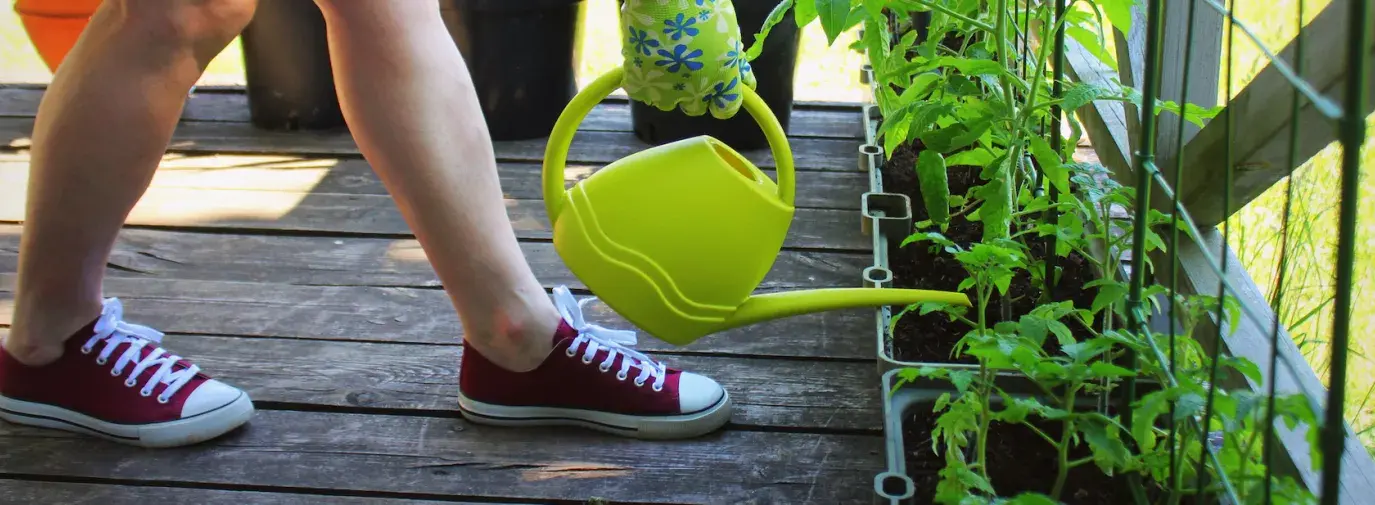
Everyone can take meaningful action on the climate by growing a Climate Victory Garden. This toolkit for beginner gardeners is a jumping off point for learning the basics and starting on a path towards gardening for the planet.
(Too busy for a long article? This short video covers the same information in under 2 minutes!)
To be part of the climate solution, ask yourself these two questions anytime you’re making decisions in your garden.
Am I protecting my soils?
Maximizing soil protection is important because this is where we’re capturing carbon—pulling the powerful greenhouse gas carbon dioxide out of the air and storing it underground where it feeds our plants and soil microbes.
Avoiding tilling and keeping soils covered are examples of protecting the soil.
Am I choosing climate-conscious products?
This is all about minimizing our climate impacts beyond the boundaries of our gardens and making decisions that help reduce emissions. When possible, opt for natural and organic alternatives to store-bought and synthetic pesticides and fertilizers. Using sustainably harvested or repurposed materials also puts the planet first.
For example, instead if using synthetic chemical fertilizers—and their associated pollution and emissions from production and transportation—fertilize your garden with compost that supports soil life and keeps food and other organic waste out of the landfill where they produce the potent greenhouse gas, methane.
Five easy steps for beginner gardeners - Start a Climate Victory Garden today!
1. Set goals
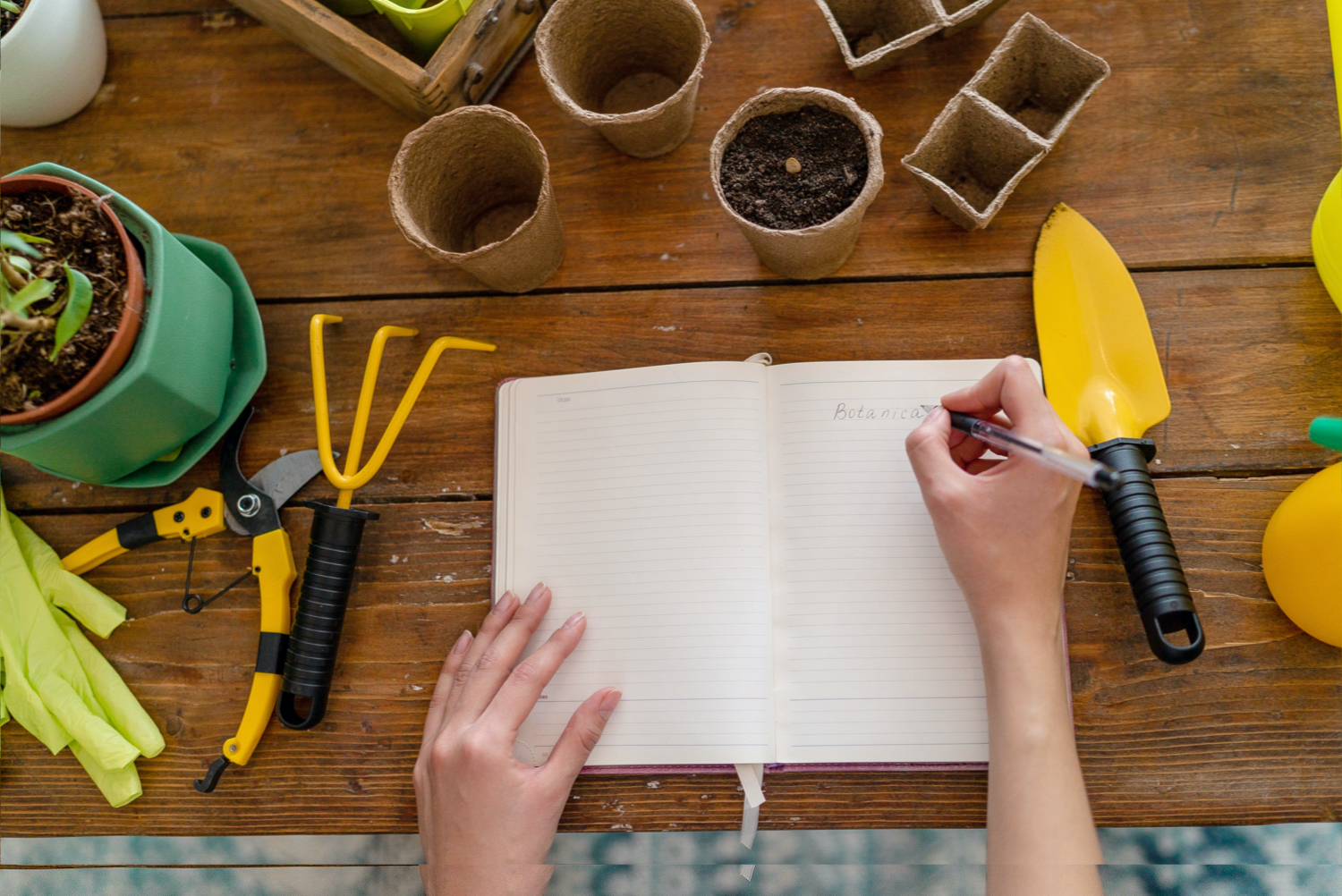
Think about your dream garden. What do you see? What do you hear? Consider drawing or writing about it. Think about how much time you have to commit to your garden—be realistic and start small. If you have just a few minutes a day, consider a container. If it’s your first time ever gardening, consider a plot ten square feet or less, which requires around two to three hours per week.
While it will take some time to achieve this dream garden, your vision and goals will guide you through the process. What does success mean to you? Maybe your top priority is growing delicious tomatoes to save money on groceries, getting your kids outside, or creating a habitat for pollinators.
No matter what your goal, garden planning is essential for success and ensures you're making the right decisions for your Climate Victory Garden to have the greatest impact on the climate, local ecosystems, and the quality of food you grow.
2. Choose what you want to grow
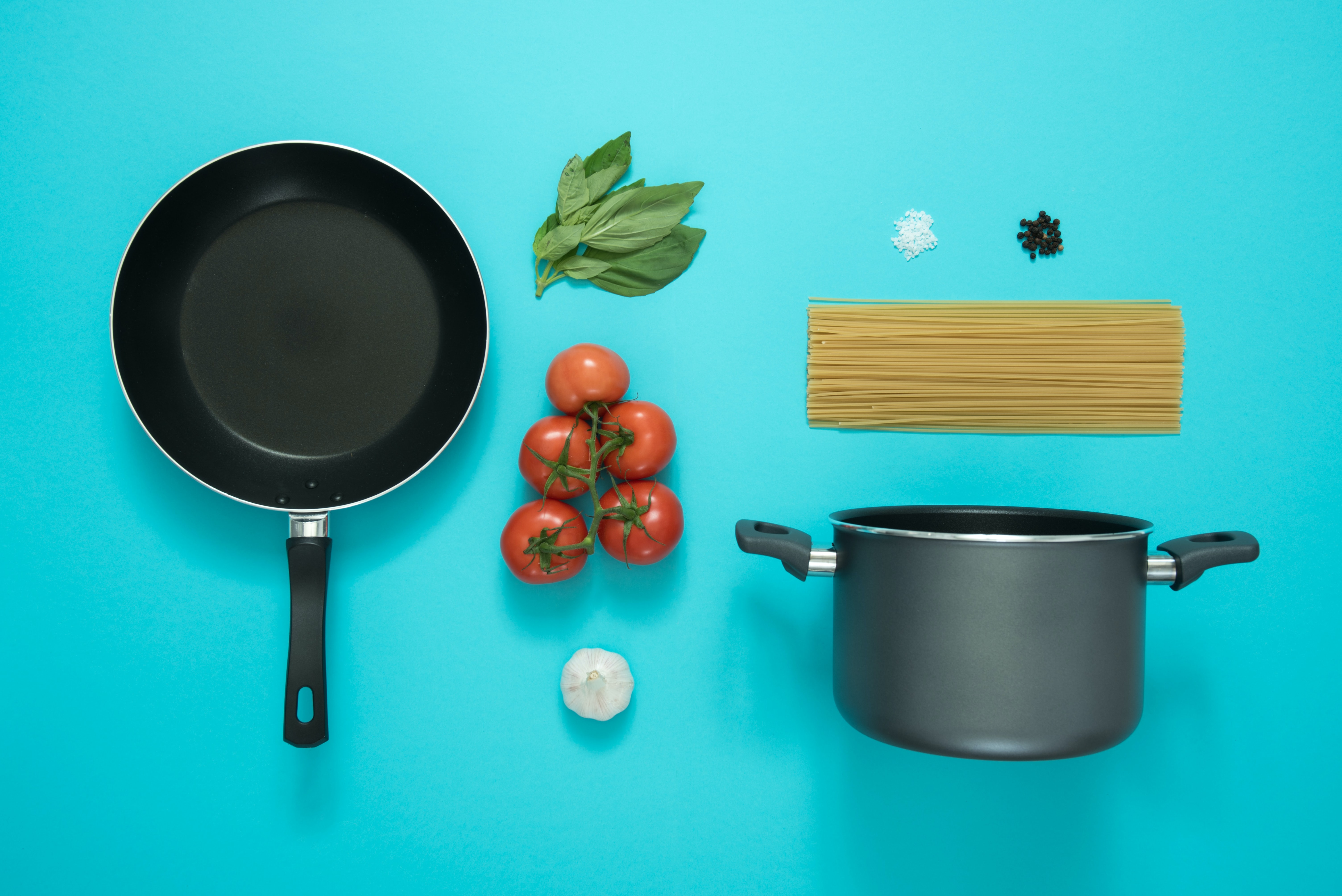
First things first—grow what you love!
Here are some additional considerations for deciding what to grow:
- Look at your favorite recipes and grow the ingredients.
- Plant veggies and herbs that are expensive and hard to find at your grocery store.
- Consider how much space you have and grow accordingly—herbs are great for small spaces, while squash need several square feet for each plant.
- Be sure you’re growing plants that are suited to your climate—find your hardiness zone and match that to the zone to information on the back of your seed packet.
- Consider perennial plants—like berry bushes—that don’t have to be replanted each season because they’re great for supporting soil heath and are less work for you.
Choosing between seeds and transplants
Beginner gardeners will have the best luck with transplants, because they’ve been nurtured past their most vulnerable seedling stage. Transplants are also quicker to mature because they’re several weeks old by the time you get them. However, because of this, they’re also more expensive than starting from seed. When buying transplants from your local nursery or neighborhood farm, choose vibrant, pest-free plants that were grown without the use of chemical pesticides or fertilizers.
If you’d like to try to start some plants from seed, opt for the easy-to-grow plants like peas, beans, radishes, leafy greens, and sunflowers. This resource will guide you through the steps..
3. Decide where to put your garden
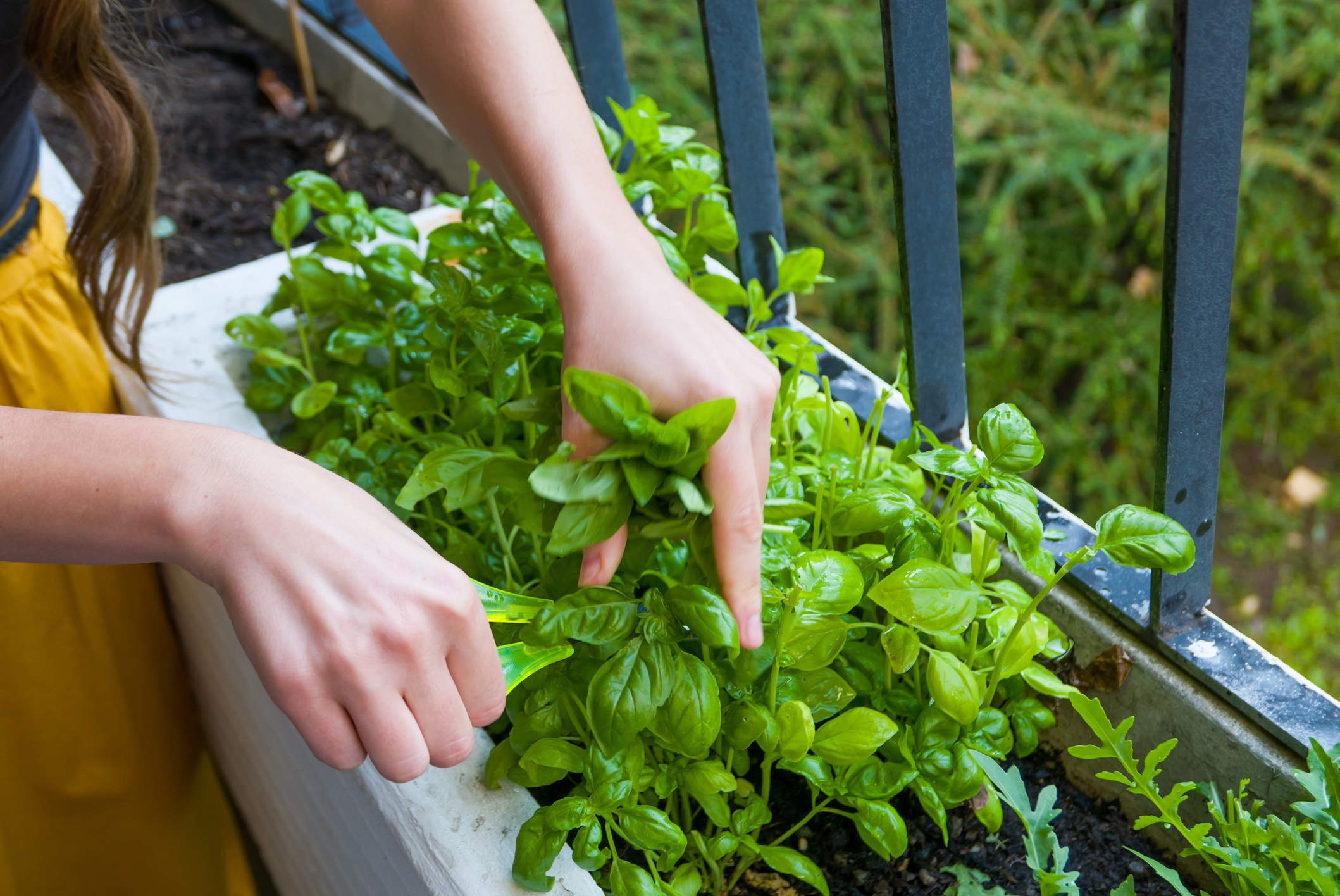
Before you get too excited, be sure to check your zoning laws, any HOA requirements, and—if you’re a renter—talk to your landlord about starting a garden. If you don’t know the entire history of your property, consider getting your soil tested for toxins like lead paint. If your soil is permanently damaged, you can still grow food in raised beds and/or containers.
The easier it is to see and access your garden, the more you’ll be reminded to care for it.
Try to choose a site that’s visible from your kitchen or other room you spend a lot of time in. It’s also helpful to have a nearby water source, like a hose or spigot to fill your watering can—or if you have an automated sprinkler system you might be able to take advantage of that (be sure the water pressure isn’t so strong that it could damage your seedlings).
If you have strict landscaping rules where you live, experiment with including beautiful edible plants in with your ornamentals.
Think you’ve found the ideal spot?
Take some time to observe the area to make sure it gets enough sun—most crops prefer 6-8 hours of direct sunlight every day. Look for other environmental factors like wind and drainage as well.
The more ideal location you choose, the happier your plants will be and the less likely you’ll have to revert to chemicals that are bad for your local ecosystems and the climate.
No yard? No worries!
If you don’t have a lot (or any) outdoor growing space, it’s time to get creative. Maybe you can grow along fence lines; in the parkways between sidewalks and curbs; at family’s, friend’s, or neighbor’s house; or other open areas in your neighborhood. Or, you might be able to get a plot at a local farm or community garden.
Have a balcony, sunny windowsill, or even just a little extra space on your countertop? You can grow a Climate Victory Garden in containers indoors or outdoors.
- Find a big container—the bigger the better, and just about anything can be repurposed so long as you’re able to add drainage holes.
- Choose your plants wisely—many veggies have varieties that are better suited for containers, look for those with dwarf and bush growing habits. Leafy greens and herbs are good for indoors.
- Supplement with light if needed—if your location doesn’t get enough sunlight, look for a small, affordable, and efficient LED indoor growing light.
4. Know when and how to plant
If you’ve purchased transplants, keep them indoors until the risk of frost has passed. When you’re ready to plant outside, help your seedlings adjust to their new home by hardening off—that is, placing them near their future planting site for a few hours each day and increasing the time gradually until they’ve spent a night outdoors in their pot.
When planting, first water the ground thoroughly. Dig a hole twice as large as the pot, take the plant out of the pot and place in the ground, and lightly pack the soil around the roots. Water thoroughly again and maintain a consistent watering schedule to avoid shocking the plant.
Planting from seed is more difficult, as they need regular watering and close attention. Look for seeds that can be direct seeded right in the dirt of your garden bed or container. This information is on the back of the seed packet, along with seed depth, row spacing, and dates to plant.
No matter what you plant, make sure you incorporate pathways into your layout and beds that you can reach the middle of for weeding and harvesting.
5. Protect soils
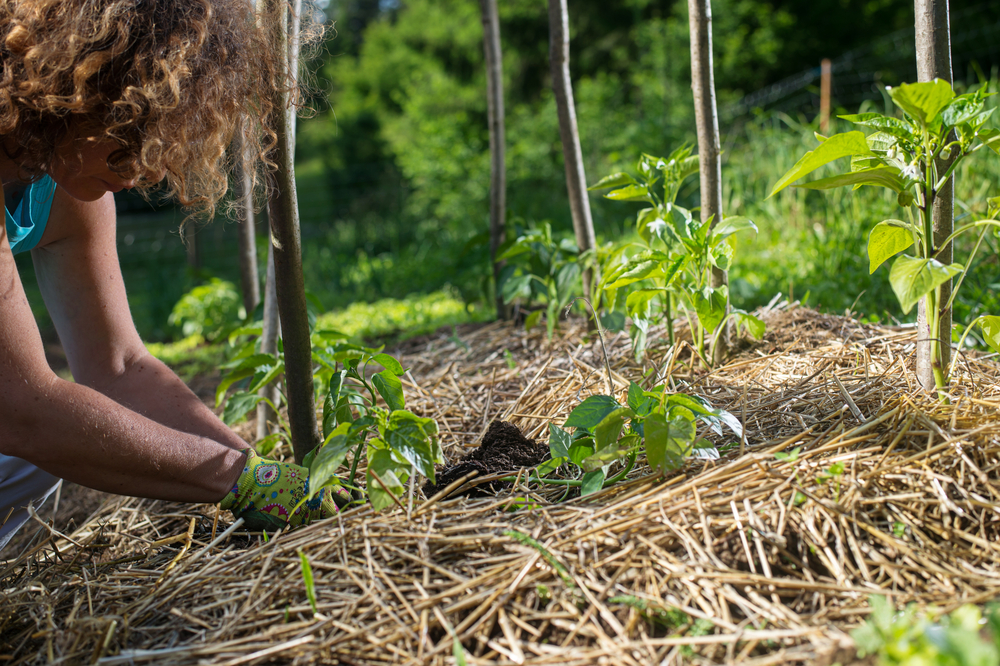
Soils are rich with life that supports nutritious crops and carbon capture. There are many ways to protect and build soil health, and these are a lifelong part of the gardening process.
- Avoid chemicals that reduce biodiversity
- Add compost to support soil life
- Mulch to protect soils from the elements
- Allow weeds to cover uncultivated soils
- Minimize digging to reduce disturbance of fungi and earthworms
- Keep old plants in the ground over the winter for pollinator habitat and to anchor soils
- When removing old plants to plant more, cut at the soil level, leaving the root underground
Whether you’re a beginner or seasoned gardener, it’s all one big experiment. There will be ups and downs.
Looking for more information about how to do any of the above steps? Check out these resources.






